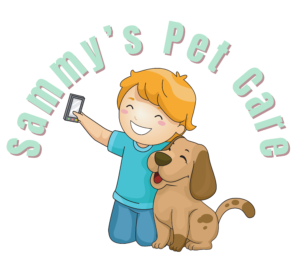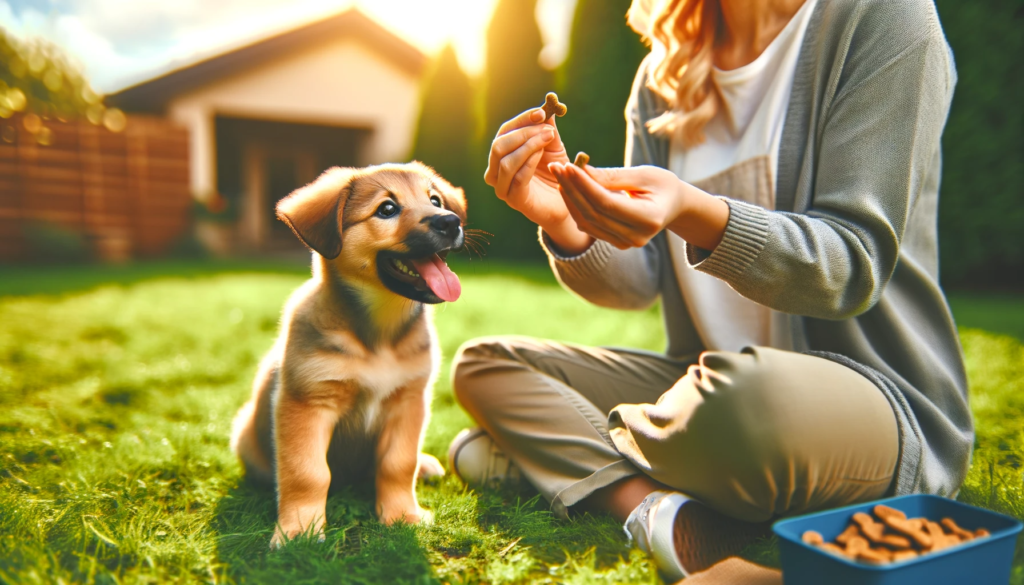
Training a puppy is an exciting journey filled with rewarding milestones and occasional challenges. As new pet owners, it’s natural to dream of a well-behaved dog that seamlessly integrates into your family and lifestyle. However, effective training involves more than just teaching commands; it requires understanding the common pitfalls and learning how to avoid them. In this blog post, we’ll explore five typical mistakes made in puppy training and offer practical solutions to help you and your furry friend succeed.
Mistake #1: Using Dog’s Name in Negative Context
The Common Pitfall
One of the most common mistakes in puppy training is using the dog’s name in a negative context. It’s a scenario we might all find familiar: a puppy chews on something forbidden or jumps on a guest, and the immediate reaction is to scold them using their name. “Max, no!” or “Bella, stop that!” might sound familiar. However, this approach can create a negative association with their name, leading to confusion and anxiety.
Why It’s Problematic
A dog’s name should be their beacon of positivity, something they respond to with enthusiasm, knowing that good things, like treats, praise, or play, usually follow. When a name becomes associated with negative experiences, such as scolding or punishment, it can diminish the dog’s responsiveness and even damage their trust in their owner.
Solutions and Alternatives
- Positivity is Key: Always use your dog’s name in a positive or neutral context. For example, “Charlie, come!” followed by a treat or praise when they respond.
- Separate Commands from Names: Instead of saying “Luna, no!”, simply use a neutral command like “No” or “Stop” without the name. This helps keep the dog’s name a positive call sign.
- Reinforce with Rewards: Regularly practice commands where the dog’s name is used positively, like “Molly, sit!” Reward them with treats or affection when they respond correctly.
- Consistency Matters: Ensure all family members and regular handlers use the same positive approach to avoid mixed signals.
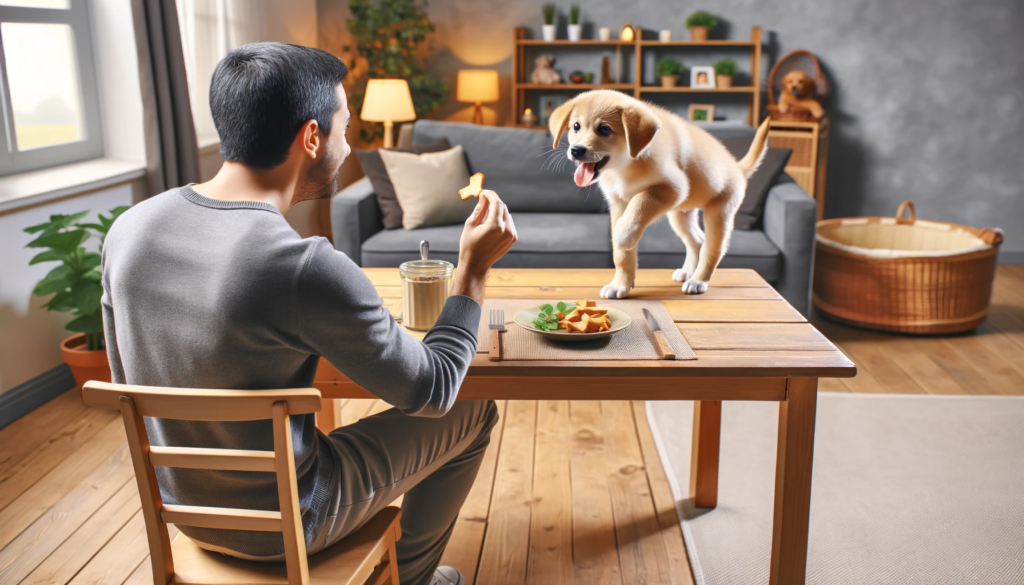
Mistake #2: Rewarding Negative Behavior
The Common Misstep
A natural inclination for many dog owners is to respond to their puppy’s negative behavior – like barking, jumping, or nipping – with some form of attention. However, even if the intention is to discourage the behavior, any attention can be perceived by the puppy as a reward, thus reinforcing the undesirable action.
Why It’s Problematic
Dogs, especially puppies, thrive on attention and interaction. When a puppy jumps up and receives a pet, a look, or even a reprimand, they interpret this as a positive outcome. This misunderstanding can lead to the reinforcement of behaviors that owners are trying to discourage.
Solutions and Alternatives
- Ignore the Behavior: When your puppy engages in unwanted behaviors like jumping or barking for attention, try to ignore them until they stop. Once they calm down, give them the attention they seek, reinforcing the idea that calm behavior earns rewards.
- Redirect Attention: Engage your puppy in a training activity or ask for a positive behavior like sitting. Once they comply, reward them. This helps in focusing their attention away from the negative behavior.
- Consistent Responses: Ensure everyone in the household responds to negative behaviors in the same way to avoid confusing the puppy.
- Reward Desired Behaviors: Be proactive in recognizing and rewarding good behavior before your puppy has a chance to act out.

Mistake #3: Not ‘Proofing’ Behavior in Different Environments
The Overlooked Aspect
A common oversight in puppy training is the failure to ‘proof’ behaviors across different environments. Many puppies may learn to follow commands like ‘sit’ or ‘stay’ in the quiet and controlled setting of their home but struggle to obey the same commands in more distracting environments, like a park or a busy street.
Why It’s Problematic
Puppies, like humans, need to understand that rules and commands apply in all settings, not just at home. If a puppy only learns to obey in one environment, they may become confused or non-compliant when faced with distractions or different circumstances.
Solutions and Alternatives
- Gradual Exposure: Start training in a distraction-free environment and gradually introduce new settings with more distractions.
- Consistency Across Settings: Practice commands in various places – indoors, in your yard, during walks, in parks, etc., to reinforce that commands are to be followed everywhere.
- Controlled Distractions: Introduce distractions in a controlled manner. For instance, practice ‘sit’ at home with the TV on, then in the yard with other pets around, and eventually in a park with other dogs and people.
- Patience and Persistence: Understand that learning takes time. Be patient and consistent in your training efforts, ensuring your puppy has ample opportunity to learn and adapt.
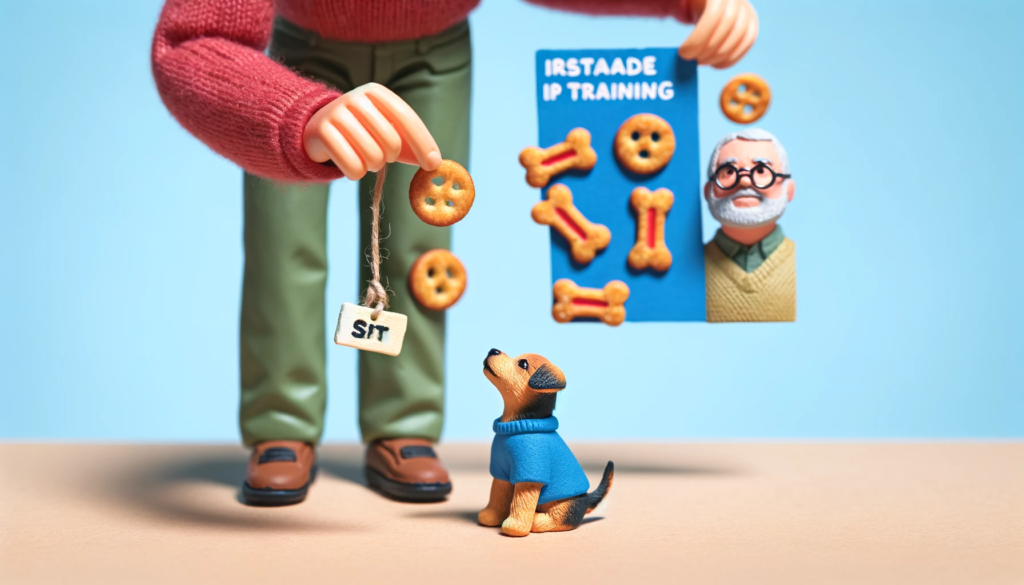
Mistake #4: Bribing Instead of Training
The Subtle Difference
A subtle but significant error in puppy training is confusing bribing with rewarding. Many owners unintentionally fall into the habit of using treats more as bribes to elicit behavior, rather than as rewards for correctly following a command. This happens when a puppy only responds to commands upon seeing a treat.
Why It’s Problematic
When puppies are bribed, they learn to perform behaviors only when a visible reward is present. This undermines the training process, as the puppy is not learning the command itself but rather responding to the sight of a treat.
Solutions and Alternatives
- Reward, Don’t Bribe: Offer treats after your puppy obeys a command, not before. This reinforces the behavior rather than the expectation of a treat.
- Vary the Rewards: Use different types of rewards – treats, praise, playtime – to keep your puppy guessing and motivated.
- Fade Out the Treats: Gradually reduce the frequency of treats over time, so your puppy learns to obey commands without always expecting a reward.
- Focus on the Command: Ensure your puppy understands the command itself. Practice commands without showing the treat first, and then reward once the command is followed.
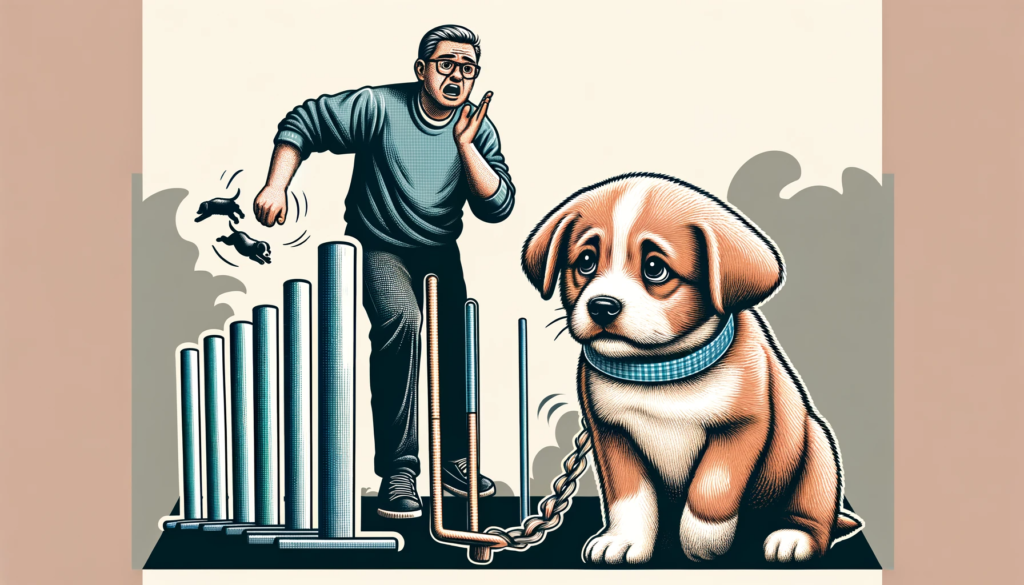
Mistake #5: Moving to Difficult Behaviors Too Quickly
The Rush to Advance
A common enthusiasm-driven mistake in puppy training is attempting to teach advanced behaviors or tricks before the puppy has fully grasped the basics. This often happens when owners, excited by early successes, push their puppies into more complex tasks too soon.
Why It’s Problematic
Rushing into advanced training can be overwhelming for a puppy, leading to confusion and frustration. This can impede their overall training progress and affect their confidence. Puppies need to build a strong foundation of basic commands before tackling more challenging tasks.
Solutions and Alternatives
- Master the Basics First: Ensure your puppy has a solid grasp of basic commands like ‘sit’, ‘stay’, ‘come’, and ‘heel’ before introducing more complex behaviors.
- Step-by-Step Progression: Gradually increase the complexity of training tasks, ensuring the puppy is comfortable and successful at each stage before moving on.
- Patience is Key: Understand that training is a process that takes time. Celebrate small victories and progress at your puppy’s pace.
- Focus on Practical Skills: Prioritize training that enhances your puppy’s daily life and your interaction with them, like leash training and polite greetings, before moving on to ‘for fun’ tricks.

Conclusion
Celebrating Training Success
As we’ve explored, effective puppy training is as much about avoiding common mistakes as it is about teaching commands. By understanding and steering clear of these pitfalls, you set the stage for a more rewarding and enjoyable training experience for both you and your puppy. Remember, the key to successful training lies in patience, consistency, and a positive approach. Each puppy is unique, and their training should be tailored to their individual needs and pace.
Training a puppy is an ongoing journey filled with learning opportunities for both the pet and the owner. If you find yourself struggling or in need of guidance, don’t hesitate to seek professional help. Experienced trainers, like those at Sammy’s Pet Care, can provide invaluable support and advice to ensure you and your puppy are on the right track.
Thank you for joining us on this exploration of common puppy training mistakes. May your training journey be filled with many happy and obedient tail wags!
More Tips
Check out our other posts
Emerging Trends in Dog Training: Adapting to the Evolving Needs of Pet Parents
The dog training industry is witnessing significant transformations in 2024, reflecting the changing lifestyle of pet owners and advancements in
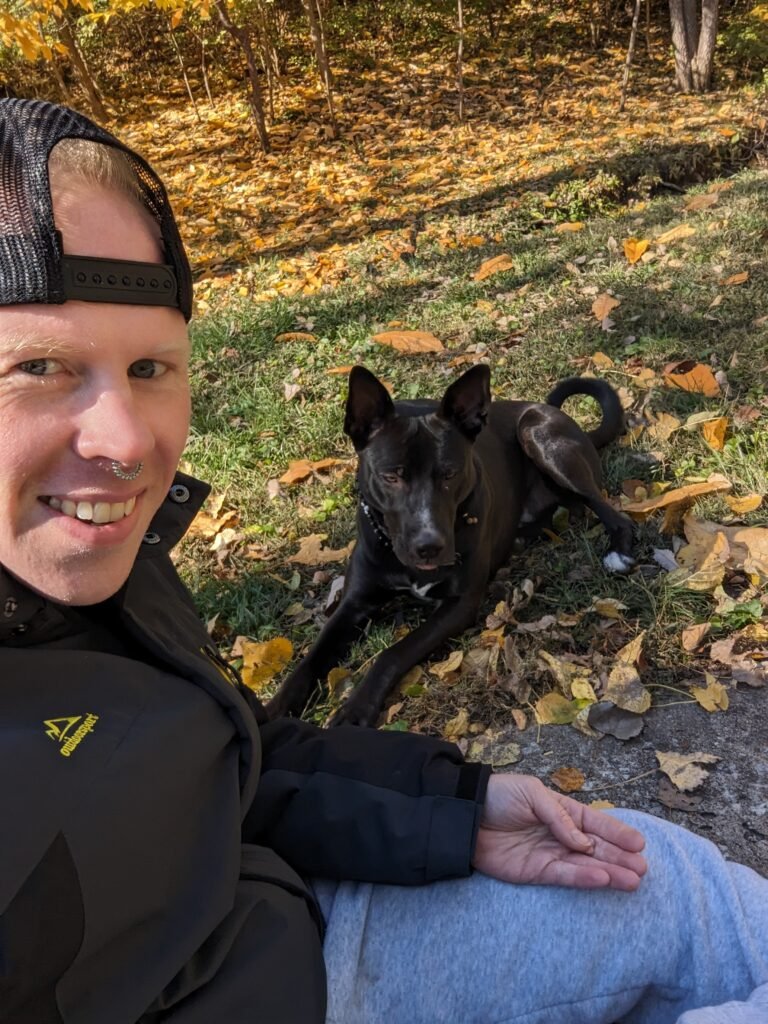
Mastering the ‘Drop It’ Command: Training Artemus with Clicker Techniques
Introduction Meet Artemus, a spirited and charming puppy just under a year old, whose journey in mastering obedience commands is

Your Ultimate Guide to Puppy Training in Parkville, Gladstone, Riverside, and North Kansas City
Introduction Welcoming a new puppy into your home is a delightful and transformative experience, especially in the vibrant communities of
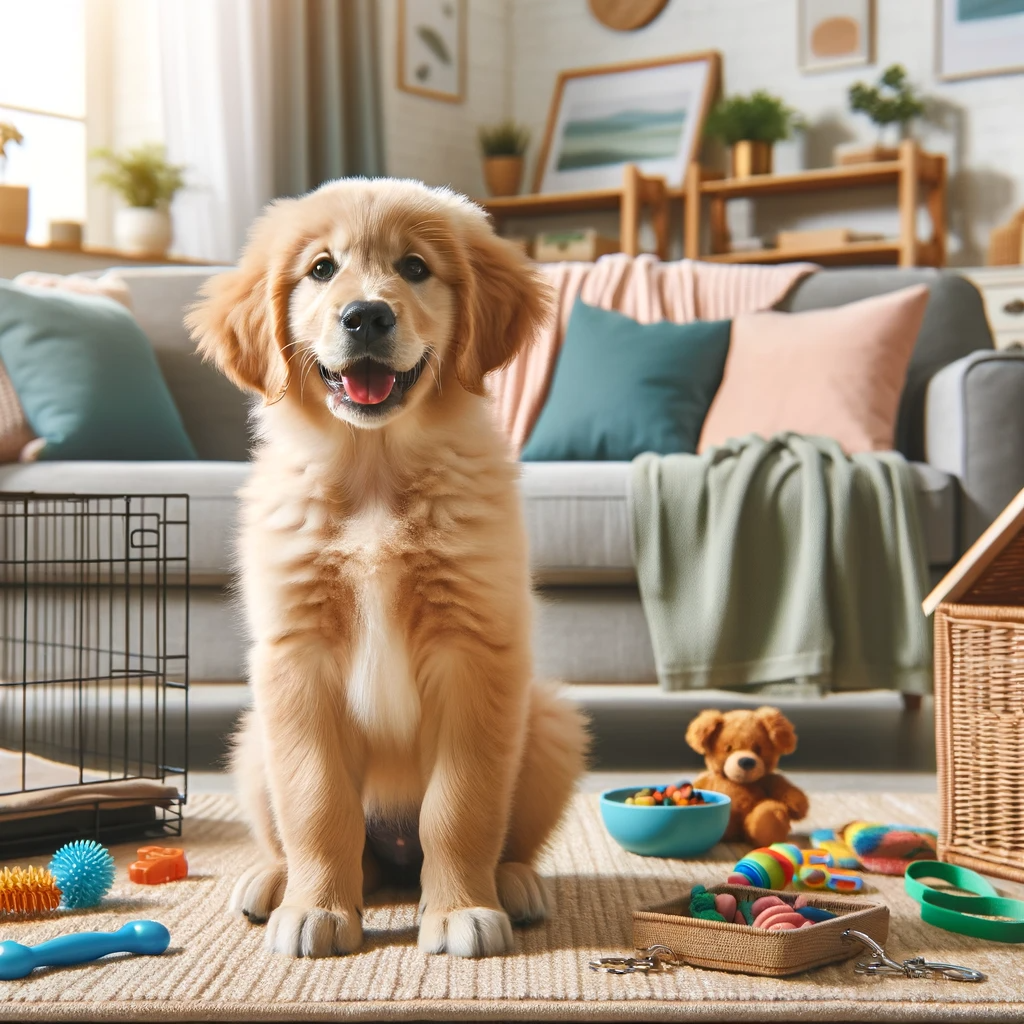
Essential Puppy Training Tips for New Pet Owners
Home º Our Blog More Tips Check out our other posts Introduction Bringing a new puppy into your home is
